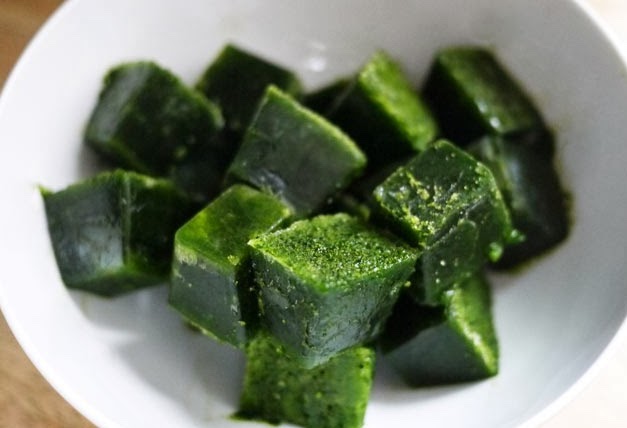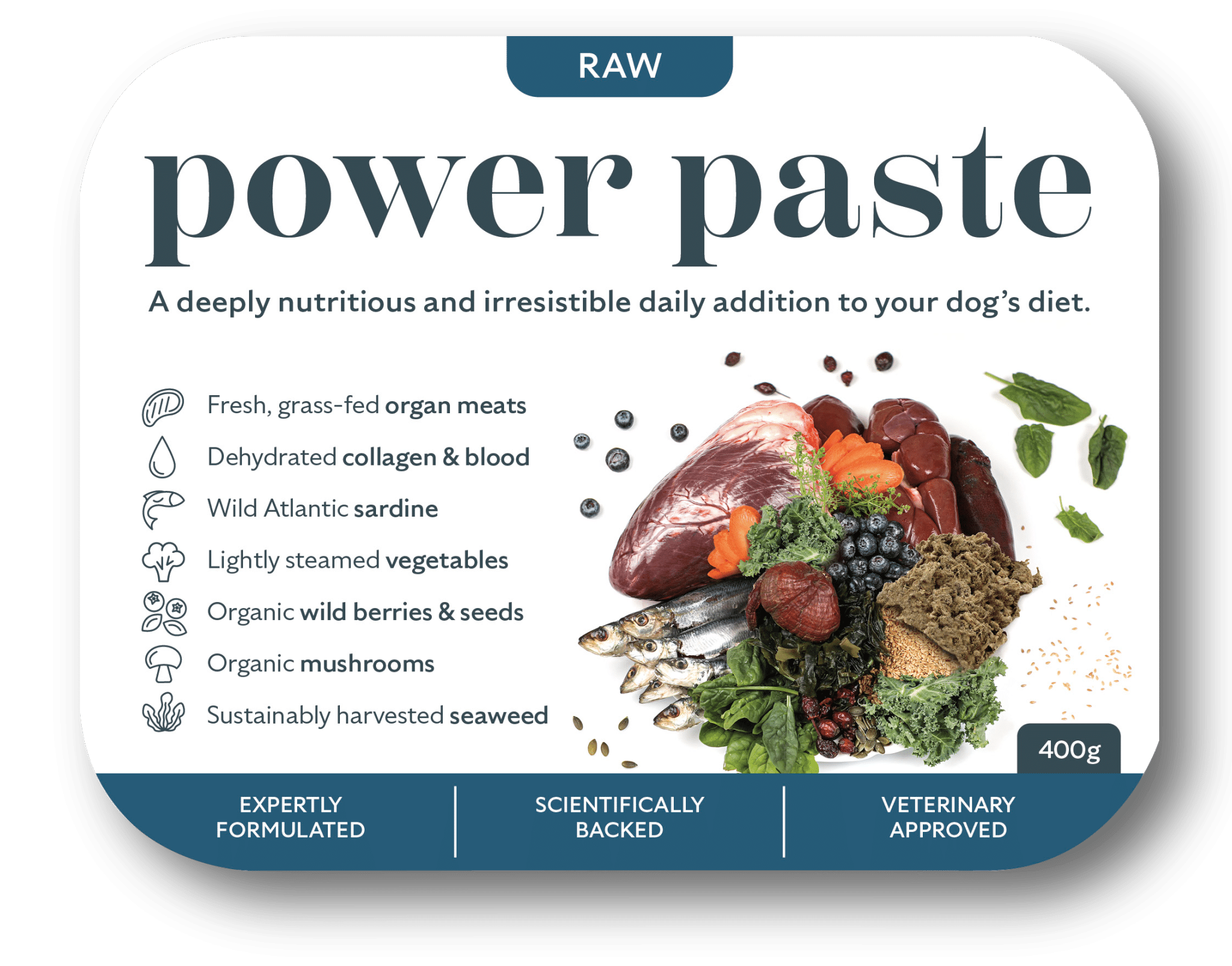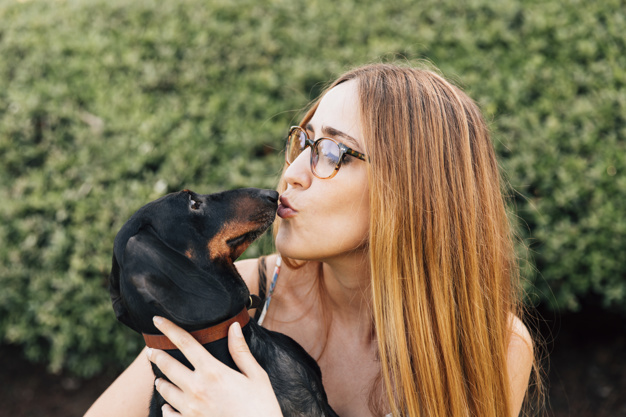Itchy Dog Scratching Or Nibbling Himself Raw? No Problem. Here Are My Top 15 Tips For Itchy Dogs Before The Vet Is Called…
So, you have an itchy dog. We get this all the time. Itch in dogs is the third most likely reason for pet owners to see the vet. Itchy dog owners are one of the top visitors to this site (we’re top of Google for a reason). While it’s sadly all too common the good news is it’s easily treated without vets or powerful drugs, in the most part without any products at all.
[My name’s Dr Conor Brady. I’m a canine nutritionist that specialises in canine food sensitivity. I have seen a lot of itch. In the article below I will tell you everything I know. Try these first before thinking about spending more money on some specialised help. If some products are recommended I will link out to them and track that link. If you buy it I will get tiny bit of that sale. For the most part, articles like this get folk on to my site. The tricky cases book me for a consultation].

In this article you are going to learn the role of (and simple solution to) the following:
- The role of the wrong food in itch in dogs
- Check for parasites (and treat naturally)
- The importance of omega 3’s
- The three best home-made recipes for itchy dogs
- Zesty Paws Allergy Dog Treats – kitchen sink approach to itch
- The two best herbal products for soothing itch
- Try an allergen wipe
- How to give your dog a soothing anti-itch bath
- Has your dog got a stubborn yeast infection?
- Canine probiotics (if a yeast issue and after you get the diet right)
- Try some salt therapy
- CBD can work for itch
- What about human anti-histamine?
Introduction to Itchy Dogs: You’ve Tried Everything…
I can guess where you are at right now: you’re the owner of a pedigree or white-coated dog. He is really itchy. He might have a big red stomach and allowed to develop he can have some lesions or hair loss. He’s restless. He’s at his ears or nibbling his toes and it’s often accompanied by weepy eyes. His issues began on a cereal-based dry food though you have now tried a variety of brands, possibly even ending up on an obscenely expensive dry food from the vets, maybe even making the leap to raw dog food, all to no avail.
You have tried everything, have spent an absolute fortune and are no closer to an answer from your vet. You feel incredibly frustrated that you can’t help your little buddy who now seems worse than ever.
The only things that seem to work are the incredibly powerful, incredibly expensive but seemingly effective steroids and NSAID treatments such as Apoquel which you seem to be needing more and more of these days.
Tell me I’m wrong?

Itch is a pesky side effect of an activated immune system. A recurring itch, certainly one outside of pollen season, should be viewed as a symptom of an inflamed dog, an immune system in overdrive, heating up. One of the symptoms of this is a hot, red, itchy skin rash.
Sadly, the vet penchant for chemically treating symptoms offers no resolution of this issue. It is simply switching off the smoke alarm. If you don’t tackle the fire under the hood you will keep needing those health-destroying drugs. Like a clean plaster on gangrene each morning, their health is only going one way.
The good news is there is LOTS you can do at home before you need to see a vet ever again for this condition. So please, grab a cup of tea and dig in. This is a long one. These itchy dog tips are in no particular order after the first which is far and away the most important. I finish with a recap of what I would do if I had that itchy dog in front of me.
1. Dry, Ultra-Processed Pet Food is the Cause of Most Itch in dogs...

These days everyone wants the quick fix – what can I put IN to stop this happening? However, with chronically itchy dogs what you take OUT is often more important.
In my opinion, from a lot of experience, the number one cause of itch in dogs is the wrong food so it’s the first place we should start.
Think of a man with a peanut allergy that unfortunately loves peanuts. He eats peanuts every day but takes a cocktail of steroids to fight the side effects he would have experienced. Sound smart?!
Most inflammation we see in dogs today and thus most itch actually arises in the gut of the animal. The gut is detecting something it doesn’t like and sends signals to the mast cells of the skin, causing them to release histamine, which is itchy. As long as you keep putting the problem IN the symptoms will keep coming out. You must remove the offenders from the diet.

Ultra-processed pet food is often the problem. The graph above is the summary of a recent study by Roine et al. (2015). It shows that dogs fed raw, species-appropriate dog food have TEN TIMES less stress metabolites in their blood than dry fed dogs. When dry-fed dogs were changed to raw, their stress metabolites fell by FIVE FOLD (for the nerds: subsequent studies show that dry-feeding alter the genetic make up of the skin, increasing cytokine gene and receptor expression)
Dry pet food contains all the top food allergies in dogs. These include wheat, cooked meat and nasty food chemicals. Moreover, as they are all made in the same factory, studies show these products, even when they claim to be “hypoallergenic” or “single protein” are contaminated with numerous problem proteins not mentioned on the label. They hold no place in the solution to itchy dogs.
Above all else, you must move your dog to a simple, fresh, hypoallergenic, organic raw dog food diet. Do a few weeks on one meat, like turkey, then switch to another protein for a few weeks. On and on, asking the dog what works. I estimate this tip alone will cure 7 out of 10 itchy dog cases. I urge you to take heed of the advice before one more drop of Apoquel goes in.
HELPFUL ARTICLES ON RAW DOG FOOD
Teach me about canine food allergy
2. Parasites (Fleas etc) are Another Common Cause of Itch in Dogs, Treat Naturally but only IF Critters are Found…
Most people reading this with itchy dogs are probably past this point but, just to reiterate, fleas, mites, sand flies etc can be really itchy. We do not recommend nasty chemical preventatives for fleas, ticks or worms, for all the reasons in these articles (unless you walk in an area very prone to ticks…and even then I would go natural first), largely as dogs rarely get these parasites. Like head lice in kids, you should treat only when found. Blindly using unnecessary chemical parasite control can actually make their itch worse by exasperating an already depleted immune system.
3. Feed Omega 3’s

Fish oil is an excellent anti-inflammatory of the skin. High in omega 3, it should always be given to itchy dogs if not all dogs ever day. Studies show fish oil is effective at reducing the steroid need of dogs suffering atopic itch.
The very best way to get this into your dog is in the whole sardine form. Ring a few fish mongers, pick up a kilo, feed whole from frozen. Excellent food.
Tips on buying fish oil capsules – the cheap stuff is padded out with cheap plant oil, so cheaper is certainly not better here. What you want are the animal-sourced omega 3’s EPA & DHA. These do all the magic but the more plant filler used the less of these you get. Don’t buy anything with a picture of a dog on it is variably a rip off. The human type are fine.
There are a few options at this point. Salmon oil will work and is popular but I don’t personally use it. Numbers of the wild type are completely decimated. The farms are not only incredibly destructive to the environment but go heavy on chemicals which accumulate in….fish fat. Cod liver oil is better (though again this is not so sustainable) though this too comes with a lot of unnecessary filler ingredients.
The best source of omega 3’s currently are the”enhanced” or refined fish oil capsule from smaller oily fish, something like Arazo concentrated fish oil capsules. You get a lot of EPA & DHA for your buck meaning you need much less. These one cost around $0.30 per capsule.
Another option is krill oil. Folk worry about the whales but that grossly misunderstands how much of this stuff there is out there. It works out around $0.30 per capsule also but is not as high as the Arazo product. Some folk recommend phytoplankton but I don’t, it is high in DHA but not EPA. You need both.
4. The Three Best Home Made Remedies For Itchy Dogs
Make Golden Turmeric Paste at Home…Incredible Anti-Inflammatory
Probably the strongest home made anti-inflammatories out there for itchy dogs is Golden Turmeric Paste. It’s a wonderfully effective and easy-to-make treatment that comes with a lot of solid science behind the active ingredient curcumin. Simply cook up some turmeric in good quality coconut oil with some ground black pepper and add it to their food. Careful – it’s so effective it can clash with any other anti-inflammatories the dog might be on. Use one or the other (recommend the natural!). Here’s how to make golden turmeric paste for itchy dogs!
Nettle is Brilliant for Relieving the Symptoms of Seasonal Allergy…Cost you nothing to Try
If you find their allergies are worse during the summer months then your dog could be suffering seasonal allergies. A move to raw will certainly help but something like nettle might be needed in this situation. Studies show that when taken orally, an extract made of common garden nettle can inhibit several key inflammatory events that cause the symptoms of seasonal allergies, such as reducing histamine activity (part of the immune reaction that makes you itchy and why you might take anti-histamine) as well as the inhibition of mast cell tryptase which prevents the release of a variety of pro-inflammatory mediators that cause the symptoms of hay fevers (Roschek et al. 2009).
In fact, nettle can also inhibit prostaglandin formation (this is what Non-Steroidal Anti-Inflammatory drugs do…what, you vet didn’t tell you?!). A 2013 study found that nettle extract is more effective than a host of other traditional tinctures in easing inflammatory disorders.
If you have them about the place, I highly recommend you make up some “nettle cubes” for your itchy dog. Mix it well into their food. Here’s how to harvest and make nettle cubes for your dog.
Try This Homemade Anti-Itchy Spray for Instant Relief
Check out this fantastic homemade spray for itchy dogs made from apple cider vinegar and green tea. It’s easy to make, keeps in the fridge and is pretty effective for itchy in dogs. In fact, apple cider vinegar can be added to their food in small amounts. Many testify to its uses for recurring itch, something to do with the life in their guts, which you will learn about later.
5. Zesty Paws ALLERGY BITES: Incredible Reviews and Money-Back Guarantee. You literally can’t lose by Trying Them Out…
This itchy dog article has been on my site for eight years now. All this time, I have only ever recommended you actually go out and buy one or two products to relieve your itchy dog (assuming you follow our diet advice and further assuming you are getting your omega 3’s from sardines, otherwise, yeah, buy them too!). Zesty Paws Allergy Bites for Itchy Dogs have combined a lot of those recommendations. Containing omega 3’s, colostrum, pre and probiotics and various vitamins, minerals and antioxidants, it’s a kitchen sink approach to itch in dogs done, and it’s successful. Colostrum is brilliant for itchy dogs. It has 7000 peer-reviewed studies to support its use for a great range of maladies, largely those of the gut though “allergies and auto-immune issues” is a close second.
When it was sold on Amazon they accumulated more than 14,000 reviews and managed to keep it well above 4 stars. The comments below are highly encouraging on an itch front.
But best of all, these guys offer a money-back guarantee on their product, at least they did on Amazon. I have never heard of such a thing for an issue as broad as itch and it’s a testament to their confidence. Usually costs around $30 (€24 / £21) per tub. For Aussies, for some reason, it’s a ferocious price. I would probably just buy the active ingredients separately.
Quercetin & Bromelain
Quercetin is a naturally-ocurring polyphenol flavonoid (antioxidant) found in a range of plant produce including apples, onions and broccoli. When isolated and replicated by the mad scientists, studies show quercetin is effective at reducing the symptoms of “allergy” by inhibiting histamine production and pro-inflammatory mediators.
When you go looking for Quercetin you will often find it coupled up with Bromelain. Bromelain is an enzyme found in pineapple flesh. Like Quercetin, when isolated and replicated, studies show this compound is effective at reducing the signs of swelling and inflammation. A study of mice shows it reduces allergic sensitisation.
Dose according to body size. Find them here on Amazon…
A Calendula Rub Soothes Itch And Repairs Skin Lesions
Another great natural addition for itchy dogs is Calendula oil. Strongly supported by the science, it’s not only a potent anti-inflammatory of the skin but is antibacterial and antifungal, sorting out many potential issues that may be developing on his damaged skin. You simply rub it on. You can try this cheaply with a good quality calendula teabag or two in a mug of hot water (allow to cool, obviously). But better still you get the actual oil. Available in your local health store or find pure calendula oil here on Amazon.
7. Allergens can be Removed with a Simple Wipe of the Face After a Walk…
While the majority of itchy dogs is a result of food sensitivity, seasonal allergy can be a problem. Bathing the dog’s feet (if its his feet that are at him) after a walk on grass might help to remove the antigens causing the itch. Many dog owners have reported success in reducing problems from contact allergens by wiping nosey faces down after a walk with a wet towel. mMaybe put some of the anti-itch spray on it or simply add some green tea and chamomile tea bags to the water before wiping.
8. Try Giving your Itchy Dog a Soothing Bath…
There’s nothing like a bath to soothe your aches and pains but you can vamp these up to help their itch too.
You can turn the homemade anti-itch spray above into a shampoo by mixing it with some pure, organic castille liquid soap (mix in the ratio 1 for 1, available in all healthy stores) and give them a nice, cooling bath. I’d add chamomile and lavender to it at this point (also from local health store) as they’re so effective at soothing itchy skin.
There are also lots of natural soap-type products that might help alleviate his itch. They’re popping up all the time, try your local pet store for one. They’re always based on the same principles, the same anti-inflammatory herbs, sometimes oats and are always high in sulfur, which is great for itchy skin. There a variety of cheap, natural products you might consider. I would go for any natural looking soap with sulfur in it. I found these on Amazon. Sulfur is magic for itchy, troubled skin.
9. Has Your Itchy Dog Got a Stubborn Yeast Infection?!
Dogs suffer yeast blooms just like humans. Yeast infections often pop up in warm and moist areas such as ear flaps, between well-licked toes or vaginal areas. You’ll know it’s yeast by the smell which is a horrible, rank cheesy smell. Lovely!
Yeast issues can result after a course of antibiotics but most likley from a diet high in carbs (most dry food). Yeast loves sugar. In fact, it needs it to live. Dry and canned pet food is packed full of carbs (a.k.a. starch), which is one simple digestive step from being pure sugar to the body. Carnivores such as dogs do not need any carbs whatsoever in their diet. It’s thought that when dogs are fed dry diets of 50-60% carbs (sugar) yeast issues can ensue and it makes for itchy dogs big time.
Unfortunately, yeast issues in dogs can be a little tricky to fix up. Step 1 is starving the yeast infection by removing all the carb-based products and feeding a simple raw dog food diet, one that is void of fruit and sweet veg likes carrots and potatoes etc. Step 2 is following a careful procedure that involves two weeks on Grapefruit Seed Extract and then two weeks on apple cider vinegar. More on yeast in dogs here.
10. Canine Probiotics
We are only now starting to realise how important the life in our guts actually is to us and our skin. For instance, ten years ago we found that probiotics can reduce eczema in kids. We have a staggering 1.5kg of life in our guts and treating them right is central to our health. Canine probiotics is a fascinating subject. In very short, dry fed dogs are living on a highly processed food substrate, one that is so heavily preserved with chemicals that even mould won’t grow on it after a year. Not a single bit of fresh food. We know consuming food with life is great for our health but studies show that eating certain probiotics may be effective at reducing inflammation and thus itchy dog symptoms, certainly if his itch is related to a yeast-bloom as a result of the high carbohydrate diet he has been on for so long. Feed canine probiotics (meant for carnivores) and ideally go for the ones in time-release capsules, if you can find them.
11. Try Some Salt Therapy In Your Itchy Dog
I know, sounds crazy, but we’ve recently I’ve had some success with salt therapy. It’s a really simple process where you offer the dog 4 different waters, 3 of which contain a little high-quality salt, the fourth is plain, distilled water. You allow the dog to choose. It’s a fascinating process, based on an unbalance of electrolytes, your dog will sniff out what he needs. There’s been a lot of good news stories with it. You’ve nothing to lose by trying it yourself! More here on our Facebook page!
12. CBD Oil Might Give Relief To Itchy Dogs
Check out how many studies I found that clinically prove CBD is effective for a great range of neurological conditions, alleviating the many symptoms of the likes of Epilepsy, Parkinsons, Alzheimers, MS, stress, anxiety and even joint swelling and repair. It’s incredible, with none of the side effects of conventional drug therapies. And no, it doesn’t contain THC so your dog won’t get stoned. I have heard this helping with itch and anecdotally you will find online many testimonials verifying this but I can find little studies to back that particular issue up. Also, as it’s $65 for one little bottle (though you will have your answer after this), perhaps put this down the list of what you should try first but DO keep it on the list. Amazing stuff. If you want to learn more about CBD before pulling the trigger, then check out our free online Dogs First Magazine. The March/April 2018 issue had a huge, in-depth write up on CBD. Grab a cup of tea and tuck in.
13. What About Human Anti-Histamine For Itchy Dogs?
If your dog is suffering some form of seasonal pollen allergy (most prevalent between May-September) then human anti-histamines could take the edge off itchy dogs. Zirtec or Piriton for humans works great in dogs and is much cheaper. Remember to dose according to body size. Give it a go.
HOWEVER, the press is not good on using these long term in your dog. I would use them only as a last resort if my dog was desperately uncomfortable while I set about re-examining the diet and adding omega 3’s, probiotics etc.
Itchy Dogs in Conclusion: Best Advice
- Dump all processed food and treats. Feed raw.
- Add good quality omega 3’s
- Add canine probiotics
- Whip up some Golden Turmeric Paste & Nettle cubes (if you can’t source nettle locally buy Quercetin & Bromelain capsules)
- Pick up some chamomile or calendula tea bags and give him a cooling spitz or bath
- If investing in a product, I would go for the Zesty Paws Allergy Bites first, CBD second. Every animal needs CBD (you too). It’s incredible, it’s just really expensive and I’m aware folk reading this are usually already heavily in the red coming to the natural table.
Above all guys, I cannot highlight enough how important that first step is to itchy dogs (every dog in fact) should be moved to a fresh, biologically appropriate diet. All the rest, in my opinion, is window dressing.
Good luck with him!
***
I have spent a lot of time building up my knowledge. From a doctorate in animal behaviour and nutrition to years in guide dogs and the last seven year inside and out of the pet food industry, I have always provided all my information free to the public, articles that I spend a lot of time putting together. While it’s clearly a passion of mine the fact remains, I can’t do this and a steady job at the same time. Without a salary or fancy sponsorship, I am left trying to monetise my site as much as I can without pushing on you horrible adverts for car loans and crap pet products. One way I do this is by tracking some of the links to products I recommend (as an Amazon Associate I then earn from qualifying those purchases). Another is by popping a few ads for my products in some of my bigger articles. Finally, I’m now putting a donation button at the bottom of my longer articles. So, if this helped you in any way and you feel you’d like to give me the price of a cup of coffee (€3), please free to do exactly that. If you’re strapped and can’t afford it, I can totally sympathise, you’re free to read on, no questions asked. We’re glad to have you on board spreading the word regardless.
Many thanks and continued good health to you and your pets.





















